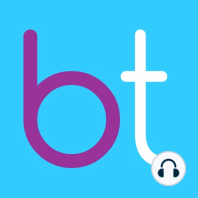62 min listen
Ep. 40 Diagnosis and Management of Eustachian Tube Disorders with Dr. Dennis Poe
FromBackTable ENT
ratings:
Length:
65 minutes
Released:
Dec 21, 2021
Format:
Podcast episode
Description
Dr. Ashley Agan sits down with the eustachian tube expert Dr. Dennis Poe to discuss his approach to management and treatment of eustachian tube dysfunction.
---
CHECK OUT OUR SPONSOR
Stryker ENT
https://ent.stryker.com
---
SHOW NOTES
In this episode of BackTable ENT, Dr. Agan discusses eustachian tube disorders with Dr. Dennis Poe, professor of otolaryngology at Harvard Medical School.
First, the doctors discuss the difference between the two main types of Eustachian tube disorders: obstructive dysfunctions and Patulous dysfunctions. Obstructive dysfunctions are a result of pathologies that cause inflamed or clogged Eustachian tubes, while Patulous dysfunctions are a result of the Eustachian tube remaining perpetually open.
Obstructive and Patulous dysfunctions can be clinically differentiated. Patulous dysfunctions commonly experience extraordinary loud noises, variable pressure sensation, aural fullness, habitual sniffing, relief upon using the Valsalva maneuver, and autophony. Although autophony is not pathognomonic for Patulous dysfunction, it can give otolaryngologists a clue for a potential Patulous dysfunction diagnosis. Obstructive dysfunction patients commonly experience negative pressure in tympanic membrane, fluid in middle ear, scarring, and fixed retraction pockets.
Otolaryngologists can also insert an endoscope through the nose to perform a physical examination on Eustachian tube disorder patients. Dr. Poe recommends that otolaryngologists obtain a longitudinal view of the Eustachian tube lumen to observe the cartilaginous and membranous walls and the quality of the valve. He recommends using the MEELO assessment (mucus production, erythema, edema, lymphoid hyperplasia, and opening quality) to grade Eustachian tube disorder patients on a scale of 1-4, with 4 being the most severe dysfunction. He cautions against using tympanograms for diagnoses because of their inaccuracy.
Eustachian tube disorders can be treated with medication. Because the most common etiology of obstructive Eustachian tube disorder is allergic rhinitis, Dr. Poe starts with allergy testing to identify possible allergens. He notes that topical nasal steroids and nasal drops are effective, but may be difficult for patients to self-administer. For this reason, patient education is very important. If medications do not work after 6 weeks, Dr. Poe recommends performing a balloon dilation of the Eustachian tube. The length of balloon dilation depends on the MEELO grading scale. If obstructive Eustachian tube dysfunction patients are a grade 3 or 4 with moderate to severe inflammatory disease and a significantly compromised valve, he dilates for the full two minutes. If they are a grade 2 or low grade 3 with a lesser disease, he only dilates for one and a half minutes or even one minute. Because pediatric patients are very sensitive to balloons, he never goes above one and a half minutes in pediatric patients. Finally, he notes that Patulous Eustachian tube dysfunction patients can be surgically treated via a transtympanic tripod-shaped angiocatheter procedure.
---
RESOURCES
Eustachian Tube Disorder Questionnaire:
https://earandsinusinstitute.com/online-questionnaires/etdq-7-questionnaire/
Xhance Nasal Spray:
https://www.xhancehcp.com/
---
CHECK OUT OUR SPONSOR
Stryker ENT
https://ent.stryker.com
---
SHOW NOTES
In this episode of BackTable ENT, Dr. Agan discusses eustachian tube disorders with Dr. Dennis Poe, professor of otolaryngology at Harvard Medical School.
First, the doctors discuss the difference between the two main types of Eustachian tube disorders: obstructive dysfunctions and Patulous dysfunctions. Obstructive dysfunctions are a result of pathologies that cause inflamed or clogged Eustachian tubes, while Patulous dysfunctions are a result of the Eustachian tube remaining perpetually open.
Obstructive and Patulous dysfunctions can be clinically differentiated. Patulous dysfunctions commonly experience extraordinary loud noises, variable pressure sensation, aural fullness, habitual sniffing, relief upon using the Valsalva maneuver, and autophony. Although autophony is not pathognomonic for Patulous dysfunction, it can give otolaryngologists a clue for a potential Patulous dysfunction diagnosis. Obstructive dysfunction patients commonly experience negative pressure in tympanic membrane, fluid in middle ear, scarring, and fixed retraction pockets.
Otolaryngologists can also insert an endoscope through the nose to perform a physical examination on Eustachian tube disorder patients. Dr. Poe recommends that otolaryngologists obtain a longitudinal view of the Eustachian tube lumen to observe the cartilaginous and membranous walls and the quality of the valve. He recommends using the MEELO assessment (mucus production, erythema, edema, lymphoid hyperplasia, and opening quality) to grade Eustachian tube disorder patients on a scale of 1-4, with 4 being the most severe dysfunction. He cautions against using tympanograms for diagnoses because of their inaccuracy.
Eustachian tube disorders can be treated with medication. Because the most common etiology of obstructive Eustachian tube disorder is allergic rhinitis, Dr. Poe starts with allergy testing to identify possible allergens. He notes that topical nasal steroids and nasal drops are effective, but may be difficult for patients to self-administer. For this reason, patient education is very important. If medications do not work after 6 weeks, Dr. Poe recommends performing a balloon dilation of the Eustachian tube. The length of balloon dilation depends on the MEELO grading scale. If obstructive Eustachian tube dysfunction patients are a grade 3 or 4 with moderate to severe inflammatory disease and a significantly compromised valve, he dilates for the full two minutes. If they are a grade 2 or low grade 3 with a lesser disease, he only dilates for one and a half minutes or even one minute. Because pediatric patients are very sensitive to balloons, he never goes above one and a half minutes in pediatric patients. Finally, he notes that Patulous Eustachian tube dysfunction patients can be surgically treated via a transtympanic tripod-shaped angiocatheter procedure.
---
RESOURCES
Eustachian Tube Disorder Questionnaire:
https://earandsinusinstitute.com/online-questionnaires/etdq-7-questionnaire/
Xhance Nasal Spray:
https://www.xhancehcp.com/
Released:
Dec 21, 2021
Format:
Podcast episode
Titles in the series (100)
Ep. 10 Comprehensive Care For Deaf And Hard Of Hearing Children With Dr. Rachel St. John: In this episode, Dr. Rachel St. John joins our hosts Dr. Ashley Agan and Dr. Gopi Shah to speak about different aspects of care for Deaf and Hard of Hearing children, from counseling to medical treatment. by BackTable ENT
